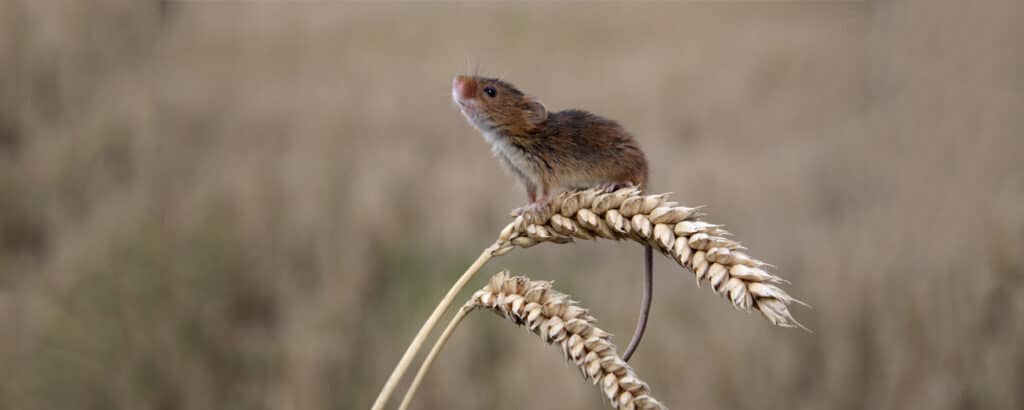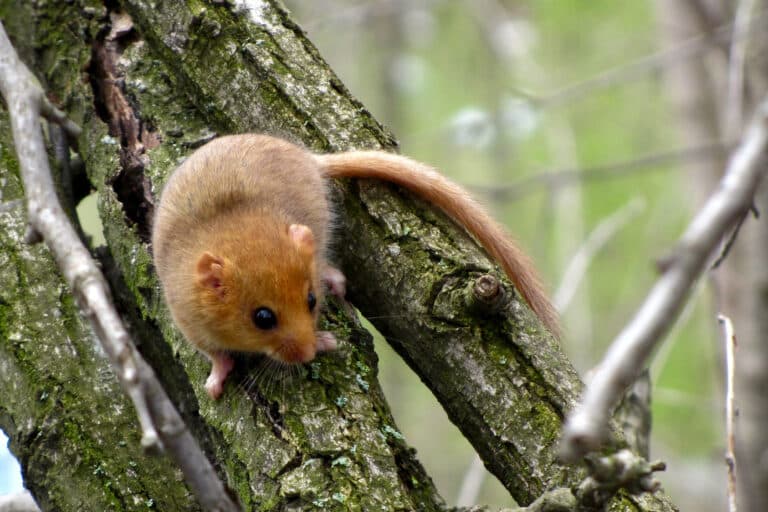Facts about the Hazel Dormouse
Scientific name: Muscardinus avellanarius
At a glance
- Dormice hibernate for about five months of the year, on or just under the ground.
- Once widespread in Britain Hazel Dormice have declined by
- Reintroduction projects have been set up to restore populations.

Hazel Dormice are small, native rodents with golden-brown fur, large black eyes and long whiskers, and the only small British mammal with a furry tail.
They require a good mix of trees and shrubs to provide them with food when they are active, and will feed on shrub flowers in spring, insects over summer and fruit and nuts in autumn.
Their specialised diet isn’t available over winter, so dormice hibernate for about five months on or just under the ground, rolled tightly into a ball in a nest of leaves and grass (the word ‘dormouse’ originates from a word which translates as ‘sleepy one’!).

Hazel Dormice are small, native rodents with golden-brown fur, large black eyes and long whiskers, and the only small British mammal with a furry tail. They require a good mix of trees and shrubs to provide them with food when they are active, and will feed on shrub flowers in spring, insects over summer and fruit and nuts in autumn.
Their specialised diet isn’t available over winter, so dormice hibernate for about five months on or just under the ground, rolled tightly into a ball in a nest of leaves and grass (the word ‘dormouse’ originates from a word which translates as ‘sleepy one’!).
One of the UK’s rarest mammals, Hazel Dormice are in serious decline, They are rare and vulnerable to extinction and are a priority species in the UK Biodiversity Action Plan, as well as being protected under the Wildlife and Countryside Act 1981. The species used to be widespread in Britain but based on national monitoring records has shown a population decline of 51% since 2000 and is now considered extinct in 17 English counties. They are now confined predominantly to southern England and Wales, and even where dormice remain, their distribution is patchy.
Factors that have led to this drop in numbers are thought to include inappropriate or lack of long-term woodland and hedgerow management; fragmentation of woodlands and hedges (dormice need well-established hedgerows to criss-cross their territories); and our variable climate of warm winters and wet springs that sometimes leads dormice to wake early when their food is largely unavailable. They also tend to be very slow breeders.
Reintroduction projects have been set up to restore populations of Hazel Dormice. In June 2021 a government press-release announced the “1000th hazel dormouse reintroduced to the UK” and in June 2022 a further 39 were released into a woodland in Lancashire’s Arnside and Silverdale Area of Outstanding Natural Beauty.
